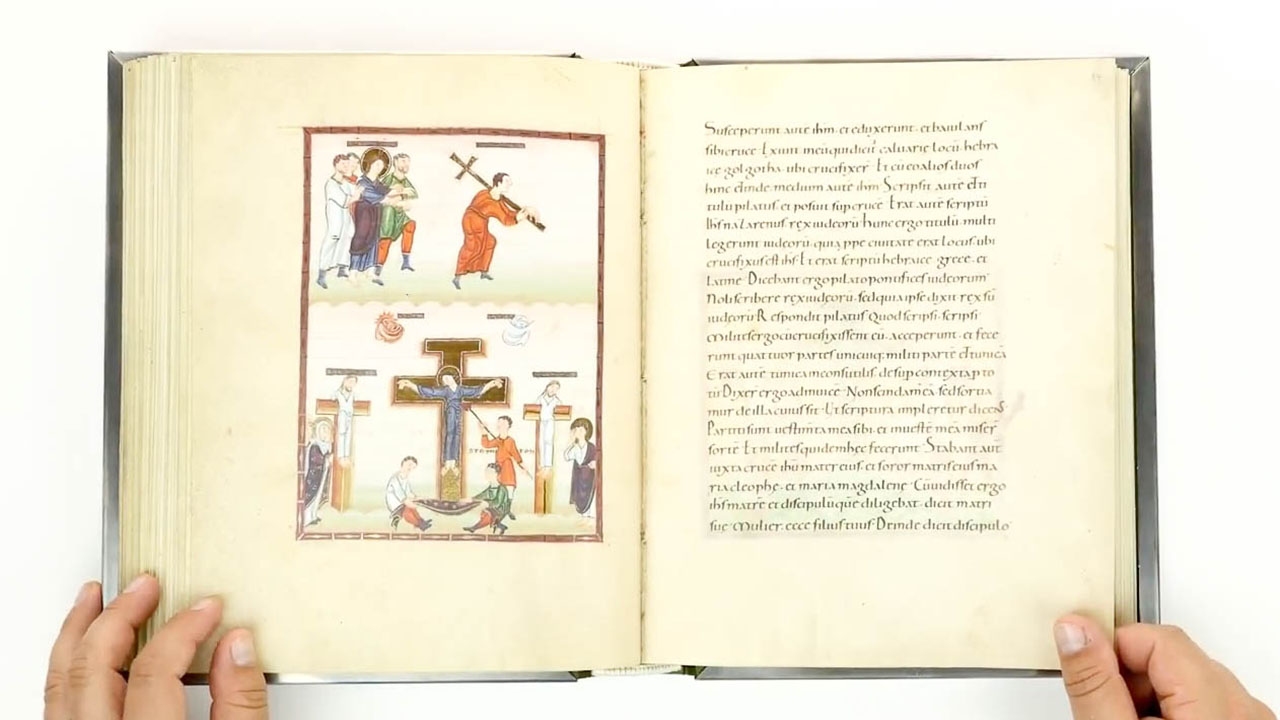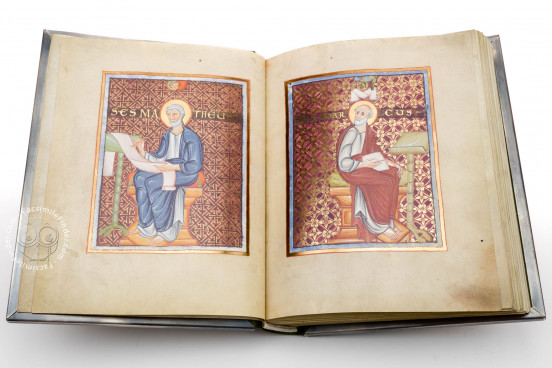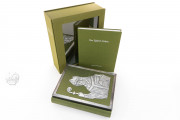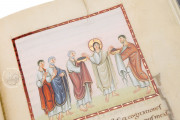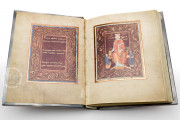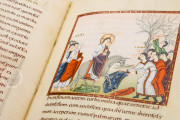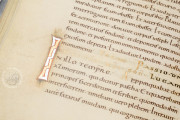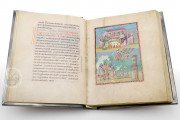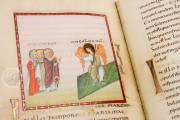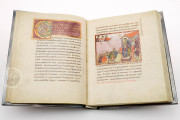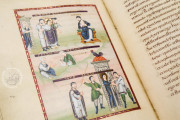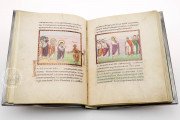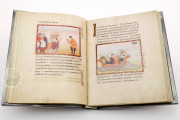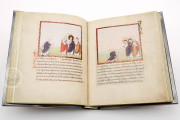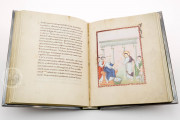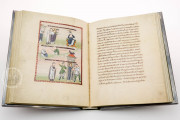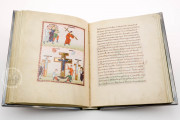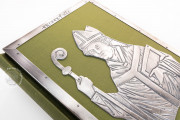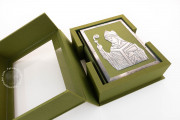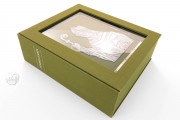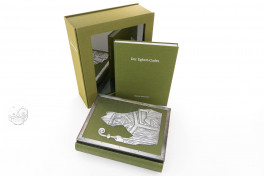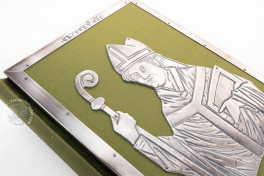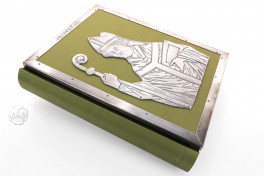Produced between 977 and 993 either at Reichenau or Trier, the Codex Egberti is a highlight of Ottonian manuscript illumination. It is named for its recipient, Egbert (d. 993), Archbishop of Trier and imperial chancellor to Emperor Otto II. The codex—a Christian Gospel lectionary—boasts a sequence of frontispieces, including portraits of the authors of the four biblical accounts of the life of Christ, and fifty-one miniatures illustrating events described in the Gospel readings.
The manuscript opens with a dedication inscription written in gold and a portrait of Egbert on purple backgrounds with tapestry-like embellishments in gold (fols. 1v-2r). It continues with full-page evangelist portraits on similarly elaborate backgrounds (fols. 3v-4r and 5v-6r). Its Gospel miniatures are renowned for their high quality, especially the evocation of atmosphere in their backgrounds.
An Elaborate Picture Cycle of the Life of Christ
The fifty-one Gospel illustrations constitute an extensive Christological cycle. Beginning with the Annunciation to the Virgin and extending to the Descent of the Holy Spirit at Pentecost, the miniatures of varying sizes are framed in gold and purple and include events from the life of Christ seldom found in book illustration.
The scenes are clear and carefully composed and feature inscriptions in gold Uncial script identifying the figures. In one instance, additional inscriptions—written in gold on purple ribbons—explain the scenes following the arrest of Christ unfolding in three registers (fol. 80v).
Master of the Registrum Gregorii
An artist known to scholars as the Master of the Registrum Gregorii—or Gregory Master—was responsible for the portraits of Egbert and the evangelists and the opening Christological miniatures. The remaining miniatures are thought to be the work of two illuminators working under the master's supervision, perhaps—at least in some instances—painting over his underdrawings. At least one of the artists who worked on the Codex Egberti may have also contributed to the illumination of the Egbert Psalter.
Writing in Red and Gold
The Gospel readings—or pericopes (from the Greek meaning "cut out")— are primarily neatly written in Caroline Minuscule by at least two scribes. Two framed incipit pages of gold lettering on purple grounds introduce the readings, with a monogram embellished with gold and silver interlace and leafy vines forming the opening word, cum (fol. 8r).
The rubrics identifying feast days are written in gold or red usually employing Rustic Capitals. The opening words of each reading are customarily written in Uncial. The manuscript's more than two hundred initials are of gold, silver, and an orange-red ink derived from lead.
Egbert, Archbishop of Trier
The portrait of the manuscript's patron shows him sitting on a cushioned stool, and an inscription in gold gives his name and position (fol. 2r). He is pictured with a square halo, an indication that he was alive at the time and considered saintly.
Keraldus and Heribertus
Two monks flank Egbert: Keraldus, who hands a gold book to Egbert, and Heribertus, who holds a second gold book in his hands. The monks are identified as from Reichenau, an island in Lake Constance that was home to a Benedictine monastery. It is assumed that the two monks were involved in producing the manuscript (perhaps as scribes or illuminators). It is debated whether the manuscript was produced at Reichenau or Trier.
The Codex Egberti has remained in Trier over the centuries. After a time in the possession of the collegiate church of Saint Paulinus, the book migrated to the Stadtbibliothek in 1810, by which time, it had lost an earlier treasure binding of precious metal.
We have 1 facsimile edition of the manuscript "Codex Egberti": Egbert-Codex facsimile edition, published by Faksimile Verlag, 2005
Request Info / Price
